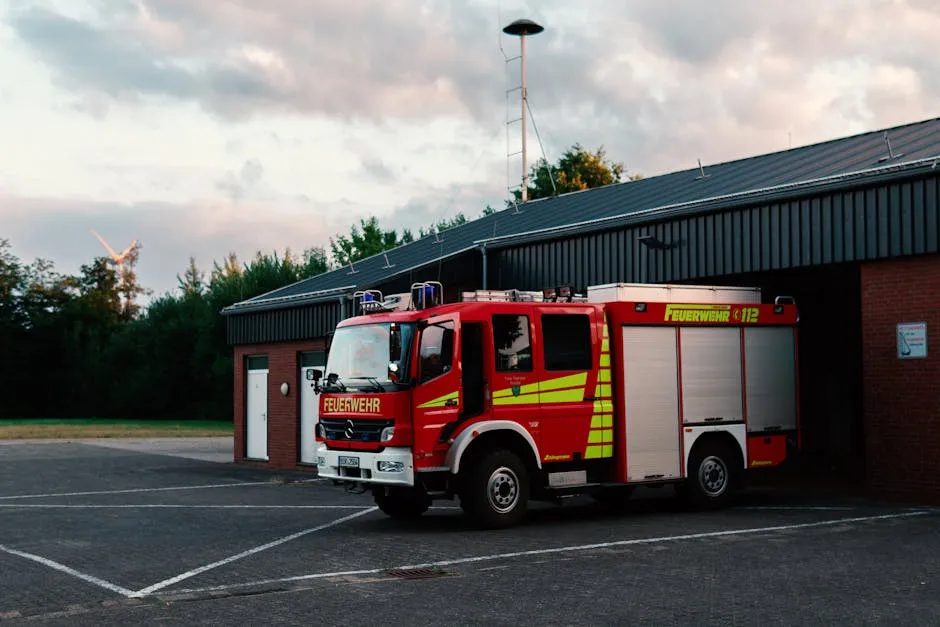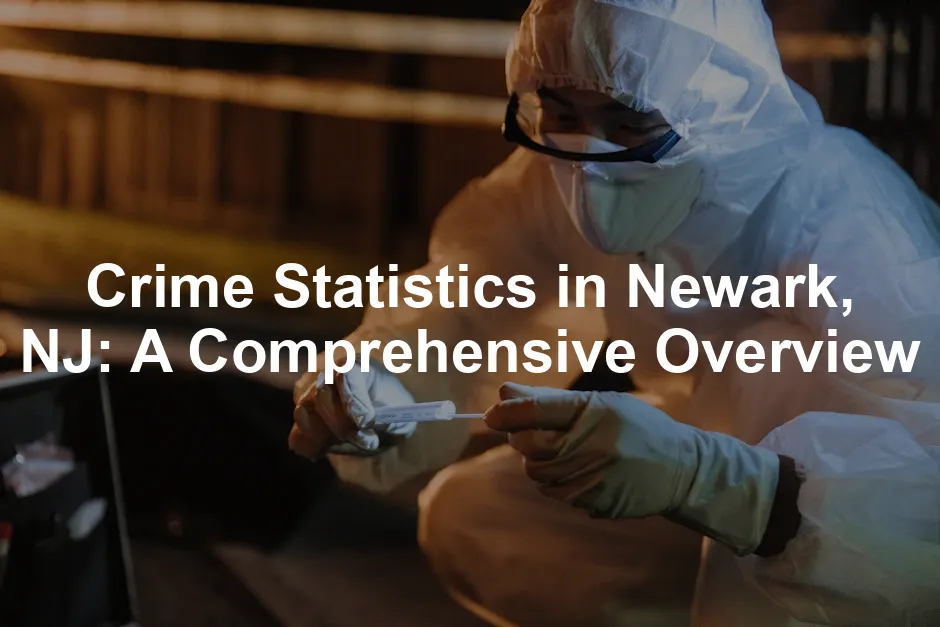Introduction
Newark, NJ, holds a prominent place in the Garden State. As the largest city in New Jersey, it serves as a bustling hub for culture, commerce, and diversity. However, Newark has also grappled with a historical backdrop of crime. Over the decades, various factors have influenced crime rates, from socio-economic challenges to community initiatives aimed at fostering safety.
This article aims to provide a thorough examination of crime statistics in Newark. We will analyze various crime types, identify trends over time, and explore community responses to ongoing safety concerns. Understanding these statistics is crucial for residents, prospective movers, and policymakers alike. Knowledge equips individuals to make informed decisions about safety, community engagement, and resource allocation.
For those interested in diving deeper into the complexities of crime and its societal implications, consider picking up The New Jim Crow. This book sheds light on mass incarceration and its effects on communities, making it a must-read for anyone looking to understand systemic issues related to crime.
We will reference reliable data sources, including the FBI’s Uniform Crime Reporting (UCR) system and local law enforcement reports. These metrics ensure transparency and credibility in our analysis. By understanding crime statistics, we can better grasp the challenges and progress Newark faces on its path toward improving public safety.

Understanding Crime Statistics
What Are Crime Statistics?
Crime statistics are numerical representations of crime occurrences within a specific area. They help us understand the prevalence of crime and can inform law enforcement and community actions. In urban environments like Newark, crime statistics play a vital role in shaping policies and community initiatives.
Generally, crimes are categorized into two main types: violent crimes and property crimes. Violent crimes include offenses such as murder, assault, and robbery, which directly harm individuals. Property crimes, on the other hand, involve the theft or destruction of property, such as burglary, larceny, and auto theft. Understanding these categories aids in assessing the safety of neighborhoods and identifying areas needing attention.
Reliable crime statistics can also reveal trends over time. For instance, a spike in violent crimes may signal deeper societal issues, while a decline in property crimes could indicate effective policing or community outreach programs. Thus, crime statistics are fundamental for local government, law enforcement agencies, and community organizations working towards a safer Newark.
Sources of Crime Data
When it comes to understanding crime statistics, reliable data sources are crucial. The FBI’s Uniform Crime Reporting (UCR) system is a key player. It collects crime data from law enforcement agencies across the nation. This system provides a comprehensive view of crime trends. However, it’s not without its limitations. It captures only crimes reported to the police, leaving a gap in the overall picture.
Local law enforcement agencies play a pivotal role too. They gather data specific to Newark, offering insights into crime patterns that might not make it to the UCR. This localized data is essential for understanding the unique challenges Newark faces.
However, discrepancies in reporting can occur. Not every crime finds its way into the statistics. A survey indicated that a significant number of crimes go unreported. In fact, only about 40.9% of violent crimes and 32.5% of property crimes were reported in one study. These underreported crimes can skew perceptions of safety and effectiveness in law enforcement.
Understanding these nuances is vital. It helps residents, policymakers, and community organizations address crime more effectively. By acknowledging the limitations of crime data, we can push for better reporting practices and community initiatives that enhance safety for everyone.

Overview of Newark’s Crime Rates
Current Crime Rates
Newark has a reputation for being a city with high crime rates. The latest statistics reveal a total crime rate of 7,121 incidents per 100,000 residents. This figure is significantly higher than both the New Jersey state average of 2,340 and the national average of 1,620.
When we break it down, the violent crime rate stands at 1,582 per 100,000 residents. This is 40.6% higher than the national average of 203. The property crime rate in Newark is 5,539 incidents, translating to 1,820 per 100,000 residents, which aligns closely with the national average.
To put this into perspective, Newark’s murder rate is particularly alarming. In 2022, there were 53 murders, resulting in a murder rate of 17 per 100,000 residents. This is drastically higher than the national average of 3.1. Other violent crimes, such as robbery and assault, also paint a concerning picture. Robbery is reported at 469 incidents per 100,000, far exceeding the national average of 47.6.
Breakdown of Violent Crimes
Let’s zero in on the specifics of Newark’s violent crime statistics. The breakdown reveals 53 murders, 86 rapes, 469 robberies, and 974 assaults. The trends over the years show a complex narrative. While there was a drop in homicides from 112 in 2013 to 53 in 2022, other categories like aggravated assault have seen fluctuations.
High violent crime rates carry heavy implications. They can lead to increased fear among residents, impacting community engagement and overall quality of life. In Newark, the perception of safety is often overshadowed by these statistics. Many locals express concerns about walking alone at night.
Overall, the violent crime rates in Newark warrant serious attention. They not only reflect the challenges faced by law enforcement but also indicate the need for community-driven initiatives focused on violence prevention and support systems. As Newark continues to address these issues, understanding crime trends will be crucial for fostering a safer environment for all.

Breakdown of Property Crimes
Newark, NJ, experiences a range of property crimes that leave both residents and businesses feeling uneasy. According to recent statistics, the city recorded 5,539 property crimes per 100,000 residents, which includes burglary, theft, and auto theft. The breakdown is revealing: there were 537 burglaries, 2,869 thefts, and a staggering 2,133 auto thefts.
These figures indicate a significant issue. Auto theft, in particular, has become a growing concern. In fact, Newark has seen a rise in auto theft incidents, leading to community worries about safety and security. When cars are stolen, it’s not just a financial blow; it disrupts daily routines and diminishes public confidence in local law enforcement.
For businesses, the impact is equally troubling. Property crimes can result in increased insurance premiums and a decline in customer foot traffic. Imagine a shop owner constantly looking over their shoulder, worried about their merchandise being snatched away. This anxiety can stifle growth and innovation, leaving local entrepreneurs disheartened.
Neighborhood Crime Analysis
Crime by Neighborhood
Newark is home to a patchwork of neighborhoods, each with its own crime profile. Areas like Springfield-Belmont and Dayton-Weequahic Park consistently report high crime rates, making them the epicenters of concern. Conversely, neighborhoods like Forest Hill and North Ironbound offer a glimpse of safety with significantly lower crime rates.
What contributes to these variations? Several factors come into play. Socioeconomic status is a major player. In neighborhoods facing economic hardships, crime can flourish. High unemployment rates and lack of educational opportunities often correlate with increased criminal activity.
Moreover, community engagement matters. Neighborhoods with strong community ties tend to report fewer crimes. When residents work together, they can create a sense of vigilance and pride, acting as the eyes and ears of their streets.

Safer Areas and Community Initiatives
Fortunately, not all of Newark is marked by crime. Some neighborhoods have become beacons of hope. For instance, Forest Hill has been lauded for its community initiatives aimed at enhancing safety. Local residents have banded together to organize neighborhood watch programs, which have shown promising results in reducing crime.
Community-driven projects, such as youth mentorship programs and public safety workshops, have proven effective. These initiatives not only educate residents but also foster a sense of belonging. The Newark Police Department has collaborated with these communities, emphasizing a partnership approach to public safety.
One notable success story comes from the Office of Violence Prevention and Trauma Recovery. Their commitment to addressing the root causes of crime has led to innovative programs that connect social workers with police officers. Together, they tackle the social issues that often lead to crime, transforming Newark into a safer place to live.
In summary, while Newark faces challenges with property crimes, the community’s resilience shines through. By understanding crime rates, engaging with neighbors, and supporting local initiatives, residents can work towards a brighter, safer future. And speaking of safety, if you’re looking to enhance your personal security, consider investing in a Personal Safety Alarm. It’s a small but mighty device that can alert others in case of danger, adding an extra layer of security.

Trends Over Time
Historical Context
Over the past decade, Newark has witnessed notable shifts in its crime statistics. In 2013, the city faced a staggering 112 homicides, a grim statistic that haunted residents. However, recent years show a decline in violent crime, particularly in murders. By 2022, the city recorded 53 murders—a significant drop attributed to a combination of factors.
Several community programs and policy changes have played pivotal roles in driving these trends. For instance, the Office of Violence Prevention and Trauma Recovery was established to address root causes of violence. This initiative employs social workers to accompany police officers, ensuring not just law enforcement but also support for those in need.
Moreover, community engagement has surged in Newark. Residents are more involved in local safety initiatives, fostering a sense of collective responsibility. Programs aimed at youth mentorship and public safety workshops have emerged, showcasing a proactive approach to reducing crime.
However, it’s essential to note that the journey hasn’t been smooth. Fluctuations in crime rates have raised concerns. For example, while violent crimes have decreased, certain property crimes have surged. As of 2023, auto thefts increased by a staggering 98%. This rise has spurred discussions around prevention strategies, indicating that while progress is evident, challenges remain. To be prepared for any roadside emergencies, consider investing in a Roadside Emergency Kit. It’s essential for anyone who drives!

Recent Developments
Recent statistics from 2023 highlight contrasting trends in various crime categories. While overall violent crime has decreased by 10% compared to 2022, the city has seen a rise in property crimes, with a 35% uptick overall. Auto thefts, in particular, have captured attention, attributed partly to a viral social media challenge teaching teens how to steal specific models.
Community policing strategies continue to be at the forefront of Newark’s crime reduction efforts. By treating violence as a public health issue, the city has reallocated resources to focus on prevention rather than solely punitive measures. This innovative approach involves partnerships between the Newark Police Department and over 40 community organizations, aiming to tackle the underlying factors contributing to crime.
Public health approaches have also gained traction. City officials emphasize the importance of addressing trauma and social issues. For instance, the director of the Office of Violence Prevention has highlighted the need for outreach to local youth, aiming to divert them from paths leading to violence. If you’re looking for a comprehensive understanding of crime psychology, don’t miss out on The Psychology of Criminal Conduct. It provides insights into why crimes occur and how to prevent them.
In summary, Newark’s crime statistics reveal a city in transition. The past decade has shown significant improvements in violent crime, driven by community initiatives and policy changes. However, the recent rise in specific property crimes indicates that challenges remain. Continuous collaboration between law enforcement and community organizations will be crucial in shaping a safer Newark for all residents.

Public Perception and Safety Tips
A recent survey of Newark residents revealed some eye-opening sentiments about safety. Among the respondents, only 22% felt safe enough to stroll alone at night. A staggering 78% expressed concerns about crime, hesitating to venture out after dark. This stark contrast highlights a community grappling with safety issues.
To navigate Newark’s streets with more confidence, here are some practical safety tips for both residents and visitors:
- Stay Aware of Your Surroundings: Always keep your head up and eyes open. Avoid distractions like your phone while walking.
- Travel in Groups: There’s strength in numbers. Whenever possible, walk with friends or family, especially at night.
- Choose Your Routes Wisely: Stick to well-lit and populated areas. Avoid alleys and deserted streets after dark.
- Use Trusted Transportation: If you’re traveling late, consider rideshare services or public transportation instead of walking.
- Secure Your Belongings: Keep valuables out of sight in your vehicle. Lock doors and roll up windows to deter thieves.
- Engage with Local Communities: Get to know your neighbors. A strong community can enhance security through vigilance and support.
- Report Suspicious Activity: Don’t hesitate to contact local law enforcement if you notice anything unusual. Your observations can help keep the community safe.
By implementing these safety measures, residents and visitors alike can contribute to a culture of awareness and protection. A little caution can go a long way in making Newark feel like a safer place for everyone. And for those who want to be prepared for emergencies, having a First Aid Kit handy is essential. You never know when it might come in handy!

FAQs
What is the current crime rate in Newark, NJ?
As of the latest reports, Newark has a total crime rate of 7,121 incidents per 100,000 residents. The violent crime rate stands at 1,582 per 100,000, while property crimes account for 5,539 incidents.
How does Newark’s crime rate compare to other cities in New Jersey?
Newark’s crime rate is significantly higher than the state average of 2,340 incidents per 100,000 residents. Compared to nearby cities, Newark ranks among the highest, indicating ongoing challenges with crime.
What are the safest neighborhoods in Newark?
Some neighborhoods known for lower crime rates include Forest Hill, North Ironbound, and Upper Roseville. These areas often benefit from community engagement and proactive safety measures.
What should residents do if they experience or witness a crime?
Residents should immediately report any crime or suspicious activity to the Newark Police Department. They can also contact the Essex County Office of Victim-Witness Advocacy for support and resources.
Are crime rates in Newark improving?
While Newark has seen a decrease in violent crime rates over recent years, some property crimes have increased. Continuous community efforts and innovative policing strategies are vital for sustaining improvements in safety.
Please let us know what you think about our content by leaving a comment down below!
Thank you for reading till here 🙂
All images from Pexels




